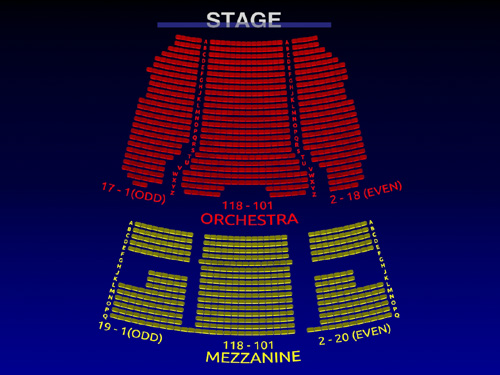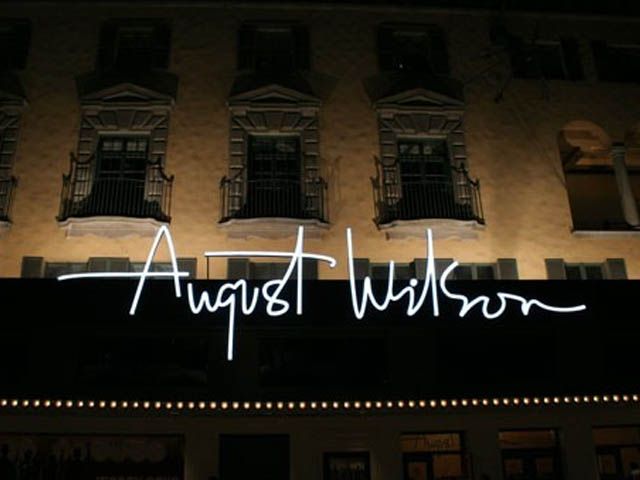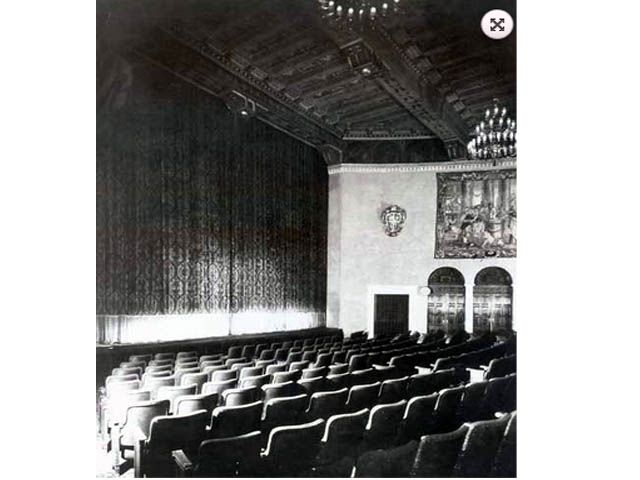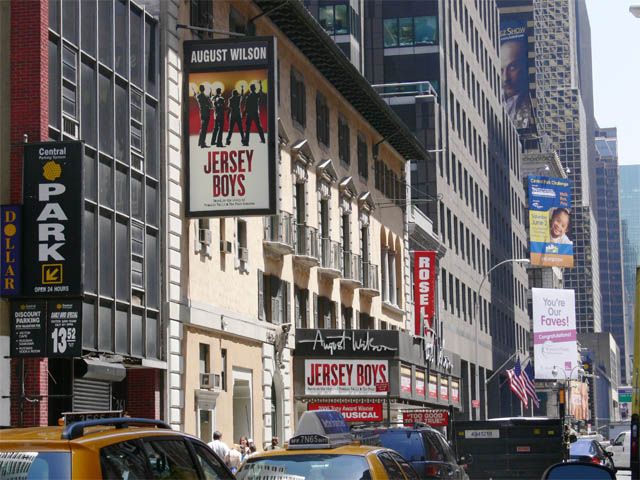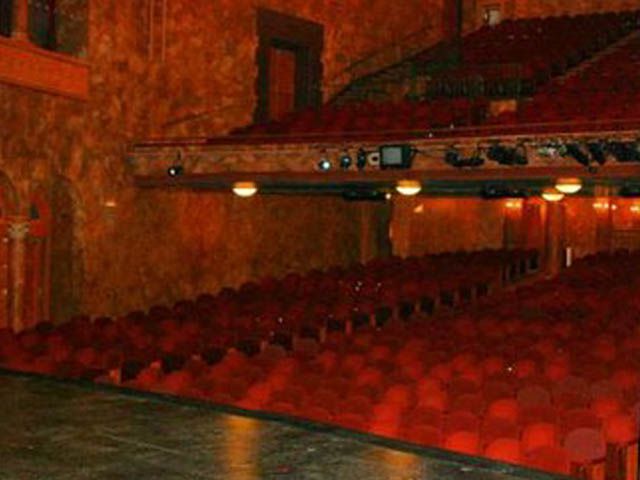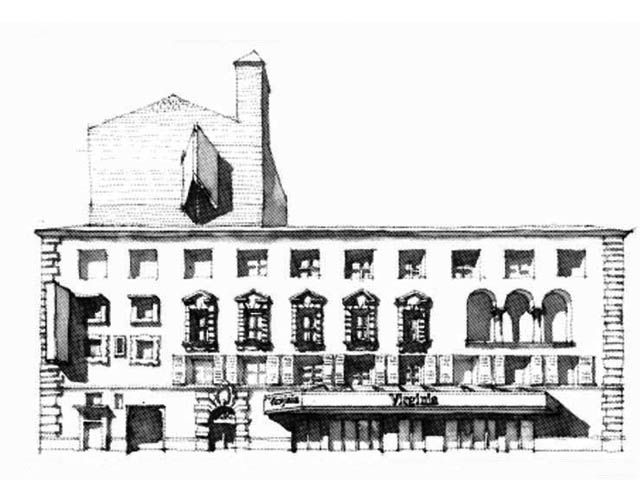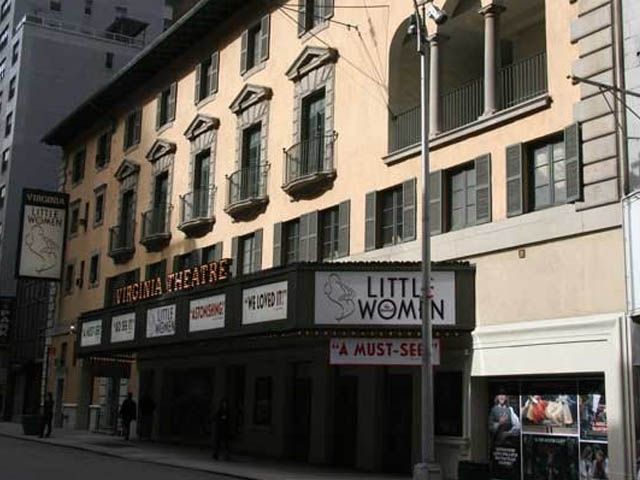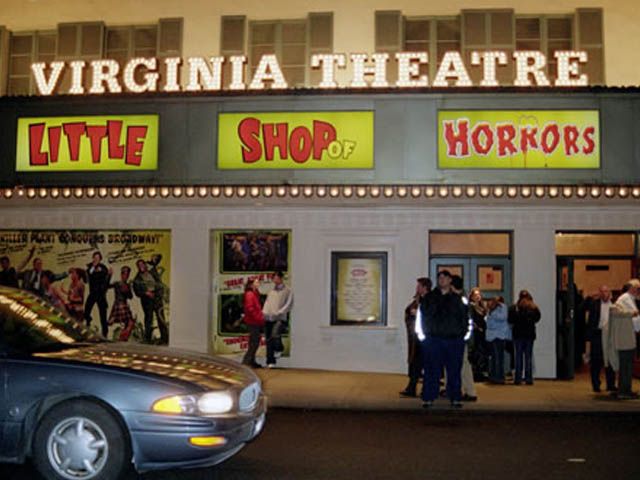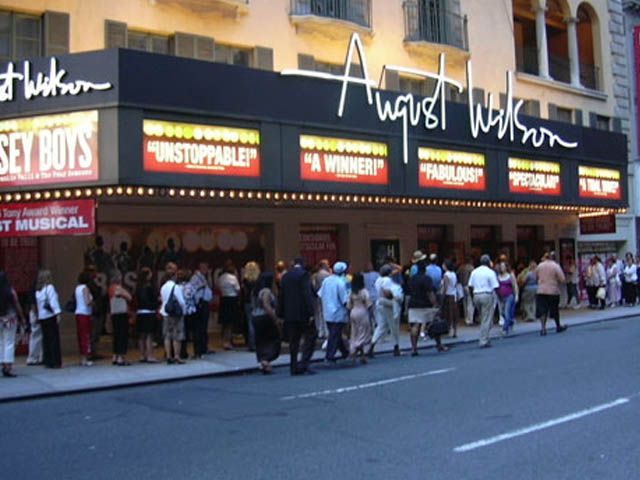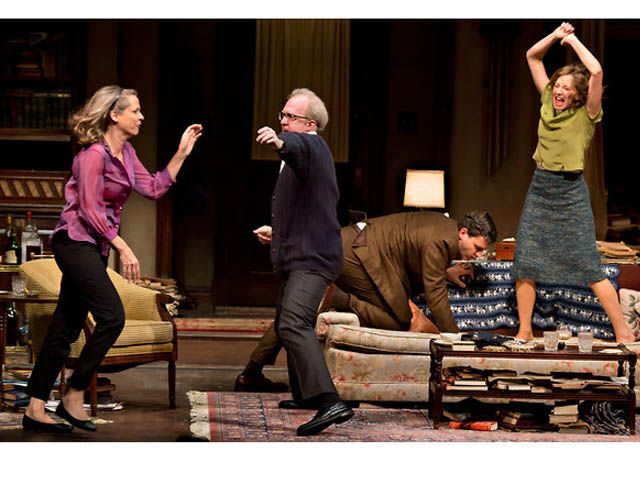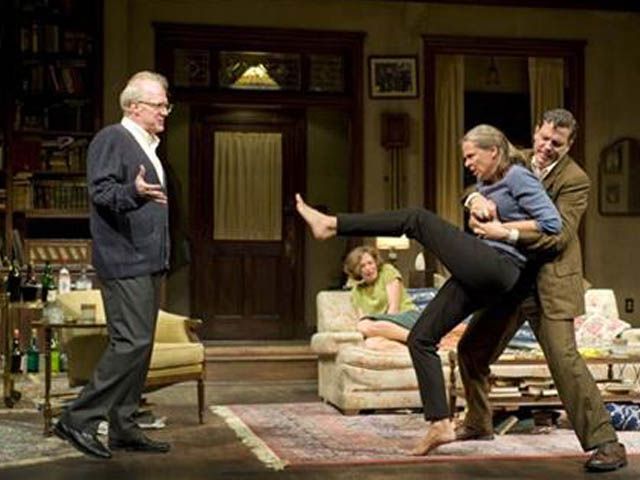The August Wilson Theatre
In 1925, the August Wilson Theatre, which was first known as the Guild Theatre, was designed by architects C. Howard Crane and Kenneth Franzheim. Constructed by the Theatre Guild, it was designed to be used as a home base for the New York based repertory company. The Guild began staging Broadway shows in 1919 and had been utilizing the Garrick Theatre for most of its productions. The directors wanted to construct their own theatre so the Guild’s 15,000 subscribers and its company could enjoy a more comfortable and lavish space.
Notable History
The Guild Theatre opened in 1925 with Helen Hayes and Lionel Atwill in a revival of George Bernard Shaw’s Caesar and Cleopatra. Another Shaw revival, Arms and the Man, was subsequently staged at the Guild and it was a success. It featured the Guild’s most notable acting couple, Alfred Lunt and Lynn Fontanne. From the mid-1920s on along with Lunt and Fontanne, the Guild presented numerous luminaries in their productions including, Dudley Digges, Philip Loeb, Henry Travers, Edward G. Robinson, Helen Westley, Armina Marshall, and Clare Eames.
The Guild was struggling to function as a repertory company in the 1930s due to the Depression, but the theatre ended up presenting a triumphant revival of Turgenev’s A Month in the Country starring Nazimova, Dudley Digges, and Henry Travers. During the run, Katherine Hepburn joined the cast (her first job with the Guild) and she had a significant impact on the company’s survival in the following years. A highlight of the 1930s was Lynn Rigg’s Green Grow the Lilacs which would save the Guild in 1943 when it was adapted into the timeless musical Oklahoma!
After a series of flops in the 1930s and 1940s, the venue was sold and used as a studio for WOR-Mutual Radio in 1943, and in 1944 the Theatre Guild transferred its company to an impressive townhouse. The Guild Theatre was leased to the American National Theater and Academy in 1950 and renamed the ANTA Theatre. The ANTA Theatre got off to a promising beginning on November 26, 1950, with Robinson Jeffers’s The Tower Beyond Tragedy featuring Judith Anderson, Marian Seldes, and Alfred Ryder. On Christmas Eve 1950, the ANTA hosted the revival of Hecht and MacArthur’s hit comedy Twentieth Century with Gloria Swanson and Jose’ Ferrer.
Jujamcyn Theaters purchased and renovated the venue in 1981 and rechristened it the Virginia Theatre after the co-owner Virginia McKnight Binder. In 1987, an extremely short, but notable production of the musical Carrie opened. It was adapted from the chilling Stephen King novel, and although it only ran for five performances, it cultivaed a small, dedicated group of fans.
On October 16, 2005, the theatre was renamed in honor of American playwright August Wilson. Wilson, whose collected works are known as The Pittsburgh Cycle, won two Pulitzer Prizes. The first was for Fences and the second for The Piano Lesson.
Small, but Impressive
The August Wilson Theatre was originally constructed in the fashionable “pseudo-Italian” style. The stage was built so large that there was barely any space left for dressing rooms or the audience (the theatre only had 914 seats, which was eventually increased). Regardless, the Guild Theatre is still one of the most striking theatres on Broadway, and a unique characteristic of the building is that the auditorium is not on street level, but on the second floor.
A New Monogram with a Blessing
The August Wilson Theatre, with 1,228 seats, has been home to several hits, including Eugene O’ Neill’s Mourning Becomes Electra, Clifford Odets’s Golden Boy, and Cy Coleman’s City of Angels. When the theatre was rechristened the August Wilson Theatre, the Broadway playhouse experienced a huge streak of luck with the opening of the long-running popular production of the musical Jersey Boys.
Google Street View

